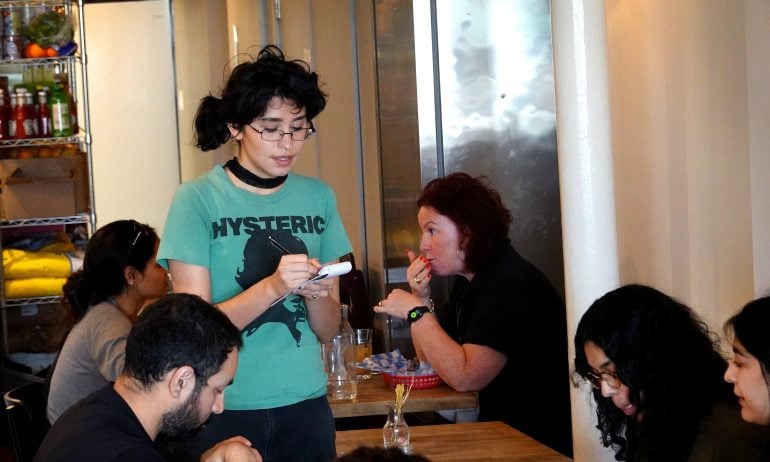These 10 Cities Have the Highest Minimum Wage in the U.S.

Many or all of the products featured here are from our partners who compensate us. This influences which products we write about and where and how the product appears on a page. However, this does not influence our evaluations. Our opinions are our own. Here is a list of our partners and here's how we make money.
With the federal minimum wage mired at $7.25 an hour since 2009, many cities and states have been taking it upon themselves to set the bar higher. And sometimes, higher again.
In fact, minimum wage earners in 22 states and 38 cities and counties got a pay bump on Jan. 1.
Today, the highest minimum wages, by state and Washington, D.C., are in D.C. ($17), Washington ($16.28), California ($16), Connecticut ($15.69) and New Jersey ($15.13). In addition, New York, Massachusetts and Maryland all have minimum wages of $15.
On the more local level, 58 cities and counties have minimum wages set higher than their state's wage. All of the top 10 are in the West, and the top three cities are close neighbors:
Tukwila, Washington: $20.29.
Seattle: $19.97.
SeaTac, Washington: $19.71.
West Hollywood, California: $19.08.
Mountain View, California: $18.75.
Emeryville, California: $18.67.
Sunnyvale, California: $18.55.
Denver: $18.29.
San Francisco: $18.07.
El Cerrito, California: $17.92.
This year’s state and local minimum wage increases are estimated to impact 9.9 million workers, according to the Economic Policy Institute, which tracks minimum wage changes.
Of those 22 state increases on Jan. 1, 14 were due to automatic inflation adjustments. Two other places have automatic adjustments on July 1 each year: Washington, D.C., and Oregon. But the state with the highest increase as of Jan. 1 was Hawaii: a $2 increase to $14, representing a 28% bump.
Who is most likely to earn minimum wage?
A 2023 Bureau of Labor Statistics report highlights the demographic characteristics of workers making minimum wage or less in 2022. These workers are most often:
Young: 45% are under the age of 25.
Women: 2% of women compared to 1% of men.
Black: 2% are Black compared to 1% among all other race and ethnicity groups.
Part-time workers: 3% work fewer than 35 hours per week compared to 1% of full-time workers.
In the leisure and hospitality industry: 3 in 5 of all workers at or below the federal minimum wage level work in restaurants, bars and other food services.
Students, those with some college experience or associate degree holders: 2% have some college experience or hold a two-year degree compared to 1% of workers without a high school diploma or those with a bachelor’s degree and higher.
Since 2009, the federal minimum wage has stayed stuck at $7.25 per hour. It’s the longest stretch without a wage increase since the U.S. first instituted a minimum wage in 1938, federal data shows.
It’s worth noting, however, that while 20 states have the minimum wage set to the federal minimum level, that doesn’t mean the majority of hourly paid workers aren’t earning more. In Louisiana and Mississippi, for example, 3% of hourly paid workers are earning $7.25 per hour. And in Alabama and Utah, it’s just 1% of hourly paid workers.
Among all hourly workers in the U.S., 0.18% earn the federal minimum wage and 1.1% earn below the federal minimum as of 2022, according to the Bureau of Labor Statistics. Those who earn below the federal minimum of $7.25 are typically tipped workers who are required to be paid a federal minimum of a $2.13 cash wage in addition to tips.
Even though most hourly workers are making more than the federal minimum, it’s still not enough to keep up with inflation — especially the elevated inflation of recent years. According to the Bureau of Labor Statistics’ inflation calculator, $1 in 2023 has only 70% of the buying power as $1 in July 2009, when the federal minimum wage was last increased. So that means $7.25 per hour today was worth $5.11 per hour in 2009.
Legislative efforts to increase the federal minimum wage since 2009 have fallen flat. The latest proposal is the Raise the Wage Act proposed last year by Democrats in Congress. It would increase the federal minimum wage incrementally to reach $17 an hour by 2028. Every year thereafter, minimum wage adjustments would be tied to median wage growth.
(Photo by Scott Olson/Getty News Images via Getty Images.)

on Capitalize's website

